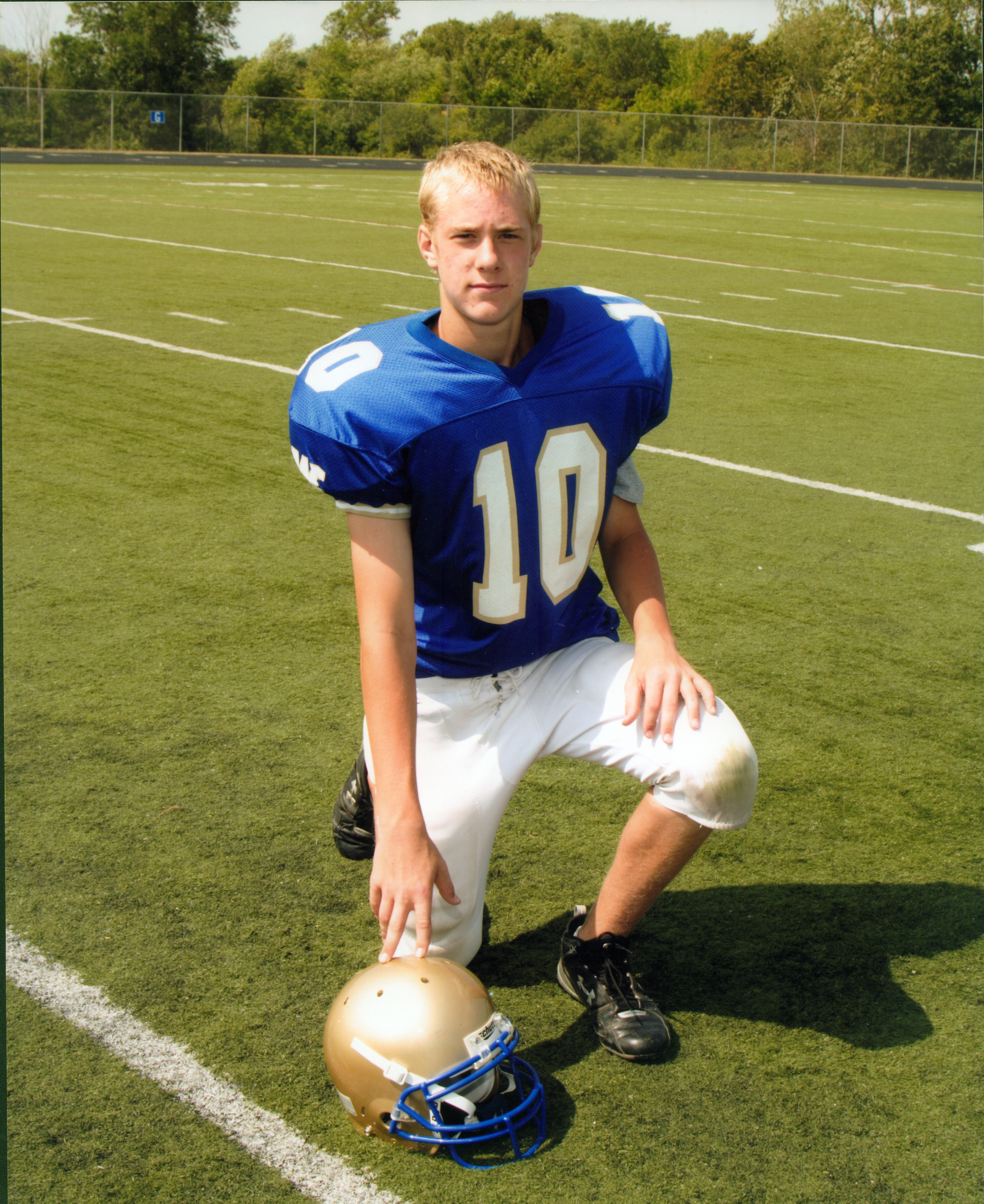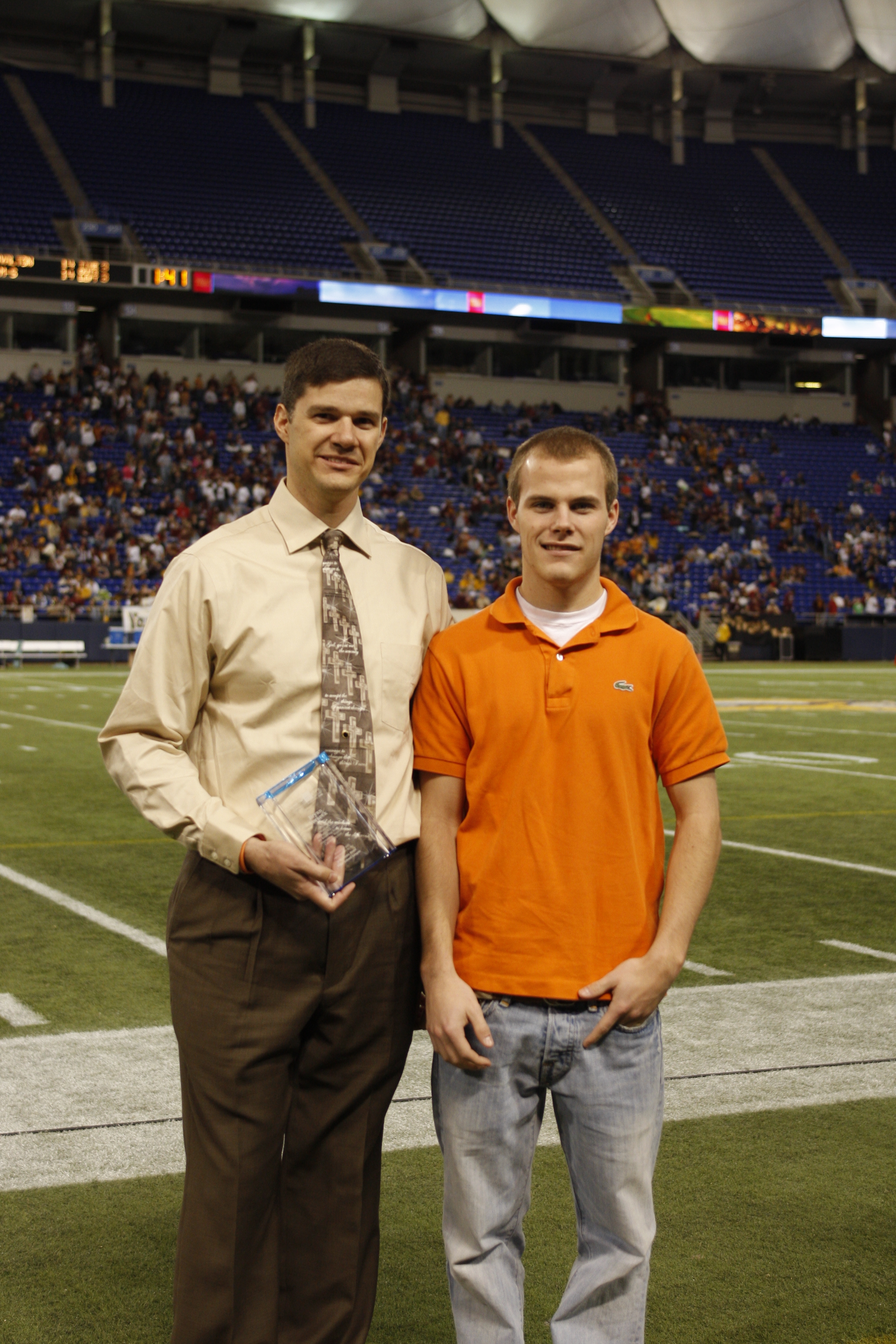It can happen to anyone at any school.
Are you and your school prepared to save a life?
Hear stories from school officials who have created an emergency action plan -- and from the people whose lives were saved.
Brad Wendland was the head football coach at Waseca when he experienced a Sudden Cardiac Arrest after a Friday night football game. View the video to hear his story and the positive impact that having an Emergency Action Plan had for Brad.

Teddy Okerstrom of Wayzata, Minnesota, was participating in his school's summer conditioning program, when he collapsed out on the football field.
One of his coaches responded to the emergency and began performing CPR while a teammate rushed to bring an Automated External Defibrillator (AED) onto the field. Teddy’s coaches continued CPR and used the AED to shock Teddy's heart back into normal rhythm just as the ambulance was arriving on the scene. Teddy was rushed to the hospital, where he was stabilized and, during his weeklong stay, had a cardiac defibrillator implanted in his chest that monitors his heart and will provide a life-saving shock if needed. Doctors still don't know why this happened to Teddy, but he is doing very well today due to the quick thinking and life-saving actions of his coaches, school staff members, and teammates.

While participating in a pick-up basketball game on Sept. 17, 2008, Cannon Falls, Minnesota, junior Michael Spillman suffered a Sudden Cardiac Arrest (SCA) without warning.
Michael had been playing during the school's open gym session when he unexpectedly began to walk toward the onsite supervisor, Ross Peterson. Before reaching Peterson, an elementary school physical education teacher, Michael collapsed onto the court.
Along with Peterson, two student-athletes who were at the open gym responded to the emergency, senior Joel Willenbring and sophomore Demetre Growette. Joel, a certified lifeguard who had been trained in emergency procedures, recalls a feeling of disbelief during the initial moments of the incident as they all went into action immediately. The trio began CPR, yet Michael remained unresponsive. Meanwhile, other players who were in the gym called 911, and the school janitor retrieved an automated external defibrillator (AED). A First Responder arrived at the scene, placed the AED pads on Michael's chest and used it to shock his heart back into normal rhythm. Michael was air-lifted from Cannon Falls High School and woke up while in the helicopter.
During his stay at Children's Hospital in St. Paul, Michael was diagnosed with hypertrophic cardiomyopathy, a genetic condition that results in a thickening of the heart wall. He received a pacemaker. Michael was able to work with the school's basketball team and play on the baseball team thanks to the school’s easily accessible AED and the quick response of his rescuers.

On Dec. 13, 2007, basketball official Dale Wakasugi collapsed on the court during the second half of a Fridley, Minnesota, home basketball game.
Fridley junior Lindsey Paradise—who had been trained in CPR and the use of an Automated External Defibrillator (AED) in both high school gym class and through her role in the local Police Explorers program—ran out of the stands and prevented Dale's head from hitting the court during a seizure. At the conclusion of the seizure, Lindsey and three other individuals, including two nurses, performed four rounds of CPR. Dale still didn't regain a pulse, so they decided to use the AED.
Athletic Director Dan Roff ran to his office to get an AED, but meanwhile, someone had already gotten the one mounted on the wall by the gym entrance. Lindsey and one of the other individuals placed the AED pads on Dale, and they checked for a pulse before administering the shock. They administered the shock, and Dale was breathing and had a heartbeat by the time the paramedics arrived to transport him to the hospital. The doctors told Dale that CPR alone would not have been enough to save him; he truly did need the AED. Lindsey has received much recognition and a few awards for her quick thinking and actions. Dale and Lindsey were both honored at a Fridley High School basketball game later in the winter.

During a home hockey game in January 2008, Faribault, Minnesota, junior forward Alex Larson blocked a slapshot with one minute to play. As he went down, his padding slid into a position so that the puck was able to hit his chest at the precise time to stop his heart.
The shot was a one-in-a-million chance: commotio cordis, a sudden blunt impact to the heart at precisely the wrong time. After Alex fell, got up, tried to skate to the bench, and then fell again. When coach Josh Solem and trainer Bryan Voracek both went out to the ice. Alex's eyes rolled back, he had trouble breathing and lost consciousness. The trainer had a portable Automated External Defibrillator (AED) with him and started hooking it up. It was placed on Alex, but before they actually needed to administer the shock, Alex’s heart started up again.
An ambulance arrived shortly after, and Alex was airlifted to St. Mary's Hospital in Rochester. He stayed for several days recovering from a bruised heart and left lung. He didn't need an internal defibrillator placed into his chest, because it was just a freak timing accident, not a heart defect of any type. He was able to play hockey again at the end of the season, four weeks later, and scored a goal in his first game back on the ice. Alex was chosen to serve as team captain his senior year.
While the trainer had a portable AED on hand, there is also one in the ice arena and inside the school's gym doors. While it's important to have the AEDs, it's equally important to make sure their batteries are new and that the devices are maintained properly. Within the Faribault school district, the nursing coordinator is in charge of maintaining the AED units.
